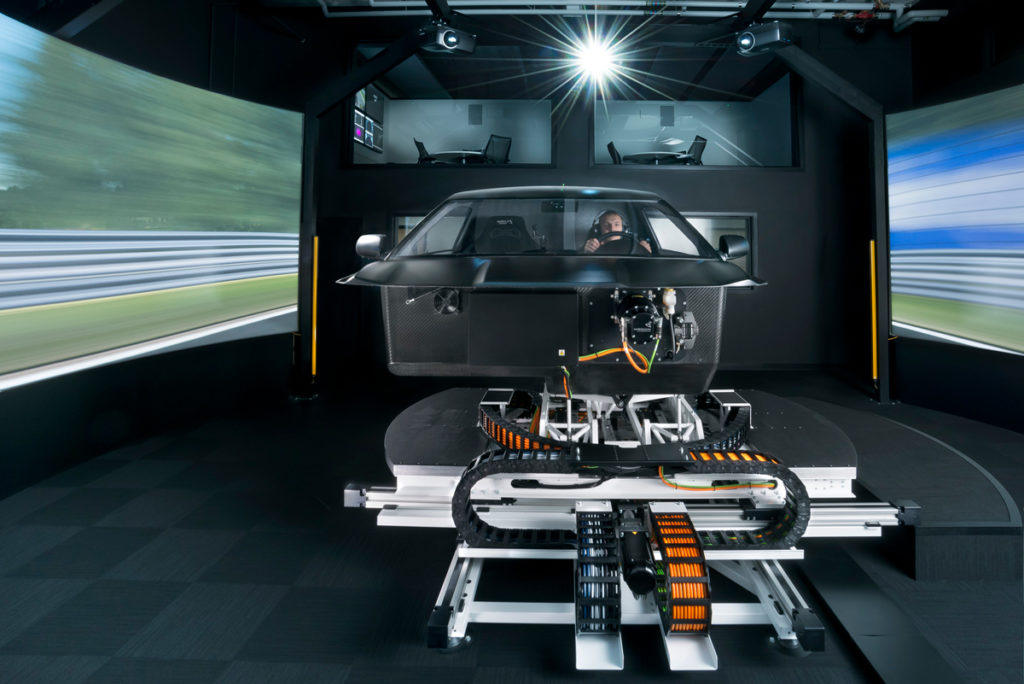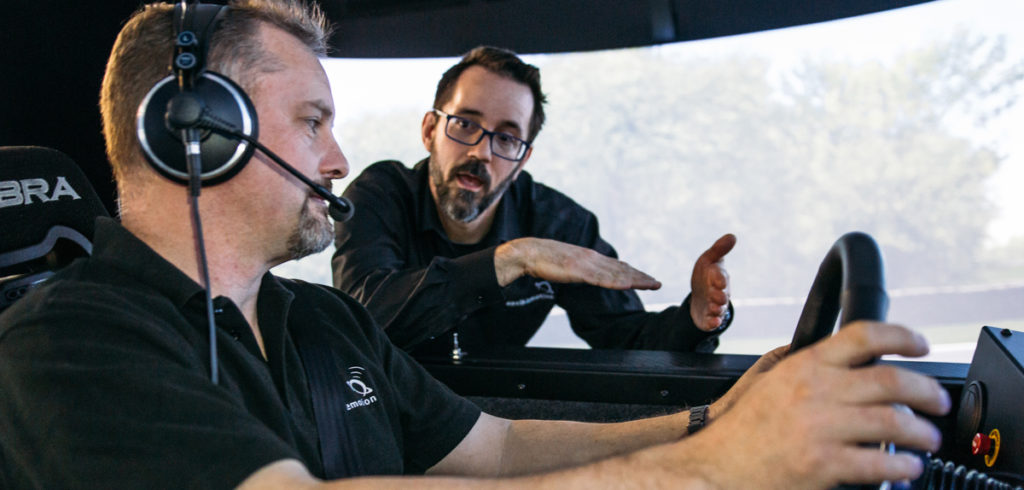Ansible Motion’s Delta simulator has been used in an academic research study to investigate the root causes of car sickness, including driver/occupant discomfort and nausea.
In the joint project with VU University’s Faculty of Behavioral and Movement Sciences, TNO’s Department of Perceptual and Cognitive Systems, and Coventry University’s Centre for Mobility & Transport, a bespoke simulator laboratory test protocol was developed to accurately reproduce specific movements that are known to induce feelings of car sickness in vehicle occupants.
In one part of the study, a cohort of adult volunteers underwent multiple tests with the Delta simulator moving 120cm laterally, to both the left and right at frequencies between 0.2Hz and 0.35Hz, for a period of 15 minutes. While this motion is just a subset of the Delta simulator’s motion capability (the Delta simulator is capable of full dynamics, up to 15 degrees-of-freedom, in industry parlance), these precisely calculated and controlled conditions might replicate the gentlest part of the experience of, say, repeatedly changing lanes when driving on a highway. While experiencing these motions, the volunteers wore blindfolds and listened to white noise through headphones to eliminate any other sensory stimulation. What happened?
The results, when combined with other test results were remarkable, with 75% of participants experiencing varying degrees of discomfort within five minutes of beginning most tests. More importantly, both the fraction of test subjects reporting some degree of discomfort and the severity symptoms proved directly comparable to similar studies using actual vehicles.
 With continued testing, participants experienced some discomfort symptoms, with more rapid discomfort onset in a larger percentage of participants. The implication is that, assuming the simulator equipment is capable, this type of laboratory testing can be used to rapidly identify and isolate specific sensory disturbances that cause car sickness. Autonomous vehicle and system makers have taken notice.
With continued testing, participants experienced some discomfort symptoms, with more rapid discomfort onset in a larger percentage of participants. The implication is that, assuming the simulator equipment is capable, this type of laboratory testing can be used to rapidly identify and isolate specific sensory disturbances that cause car sickness. Autonomous vehicle and system makers have taken notice.
The results of this study are good news for the automotive industry. Simulation has already answered many of the complex problems that vehicle development uncovers, and while car sickness is a problem as old as the car itself, this type of research is a first step in creating a scientific approach to solving a problem that will very likely be key to the development of autonomous vehicles.
Aside from offering the potential to reduce development time and time to market for vehicle manufacturers, the use of driving simulators also has significant safety implications. As previous studies into the effects of car sickness have found, being subjected to conditions that induce symptoms can degrade task performance – a vital component during periods where an autonomous vehicle will return full control to a driver who may have been otherwise engaged for some time.
As it stands, automated driving systems still require a degree of input from the driver, whereas Level 4 and 5 autonomous vehicles will offer vehicle occupants and in particular the driver, the opportunity to take their attention away from the driving process altogether. The switch from a separate task to resuming control of the vehicle, and how drivers respond to this demand, is an area yet to be fully explored.


